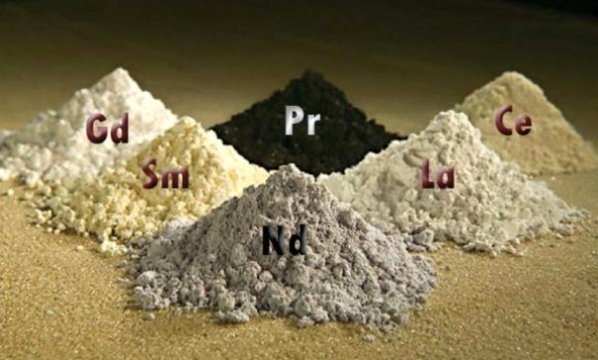Rare Earth Elements are an important component of
The Harmonic Shield patch. What are Rare Earths ?
Components manufactured from REE-containing compounds have profound effects on the performance of a range of complex engineered systems and devices. Rare earths are used in the manufacturing of iPods, computers, cell phones, hybrid car motors, wind turbines and high tech military systems
|
While the word "rare” may make you think that these elements are scarce, they're in fact found all over our planet - but typically in small amounts. The term "rare earth” comes from their initial discovery, when only tiny portions of these minerals could be isolated from larger quantities of more common elements. Today, "rare earth” is used to describe any of the 15 metallic chemical elements with atomic numbers from 57 to 71 (called "lanthanides”) and the chemically similar elements scandium and yttrium.
|
The global demand for rare earths has increased as more uses for these elements are found. Today there are hundreds of uses for REE, ranging from high tech (lasers, camera lenses, computer memory modules, x-ray machines), energy (batteries, lamps, superconductors) and industrial (aerospace, caustic cleaning agents, specialized glass) applications. In the last 20 years the importance of rare earth elements has skyrocketed. Here's an overview of ways they're used in the world today :
Electronics :
Manufacturing
Medical Science :
Technology :
Renewable Energy :
Other interesting facts about uses for rare earths :
- Television screens, computers, cell phones, silicon chips, monitor displays, long-life rechargeable batteries, camera lenses, light emitting diodes (LEDs), compact fluorescent lamps (CFLs), baggage scanners, marine propulsion systems
Manufacturing
- High strength magnets, metal alloys, stress gauges, ceramic pigments, colorants in glassware, chemical oxidizing agent, polishing powders, plastics creation, as additives for strengthening other metals, automotive catalytic converters
Medical Science :
- Portable x-ray machines, x-ray tubes, magnetic resonance imagery (MRI) contrast agents, nuclear medicine imaging, cancer treatment applications, and for genetic screening tests, medical and dental lasers
Technology :
- Lasers, optical glass, fiber optics, masers, radar detection devices, nuclear fuel rods, mercury-vapor lamps, highly reflective glass, computer memory, nuclear batteries, high temperature superconductors
Renewable Energy :
- Hybrid automobiles, wind turbines, next generation rechargeable batteries, biofuel catalysts
Other interesting facts about uses for rare earths :
- The rare earth element europium is used to identify legitimate bills for the Euro bill supply and prevent counterfeiting
- An estimated 1 kg of rare earth elements can be found inside a typical hybrid automobile.
- Holmium has the highest magnetic strength of any element and is used to create extremely powerful magnets. This application can reduce the weight of many motors
|
The Green Factor
Many rare earths have found unique applications in new technologies that reduce humanity's impact on the environment. As mentioned above, a new generation of energy-saving fluorescent light bulbs uses rare earths in their manufacturing. Up to 1,000 grams of neodymium are needed to make several components for hybrid automobiles while another rare earth, dysprosium, is required to construct the lithium battery that powers these hybrid vehicles. |
Magnets manufactured using rare earth metals are capable of being far stronger than traditional metal magnets, and also much smaller in size. This makes them ideal for the motors of renewable energy equipment like wind turbines where being as lightweight as possible is a key requirement, or mobile phones which need increasingly smaller sized components. Computers and other electronic devices are also using lanthanum-nickel-hydride rechargeable batteries, which produce less toxic pollution than the older nickel-cadmium rechargeable ones
The Harmonic Shield : Order Direct





